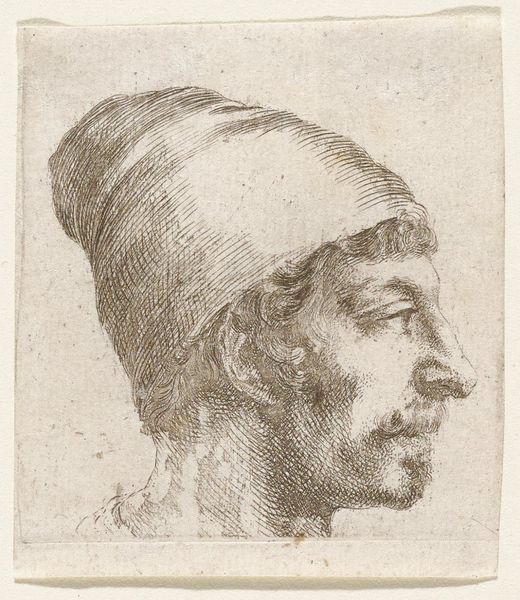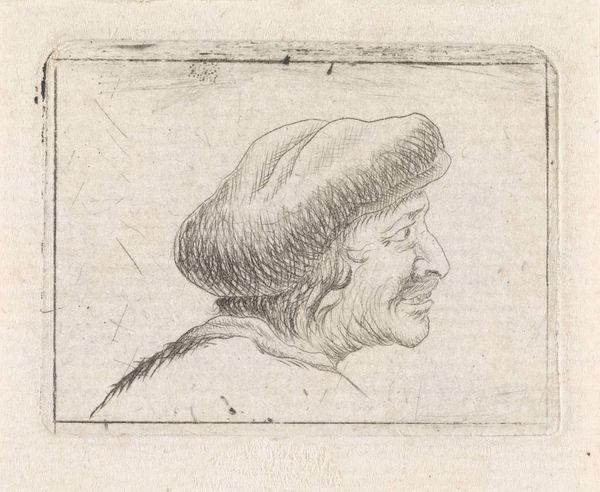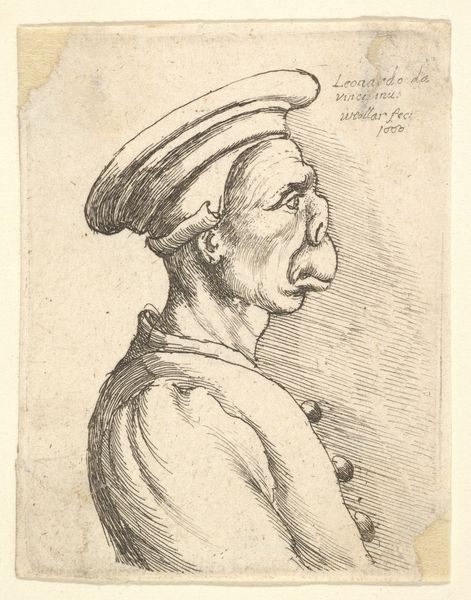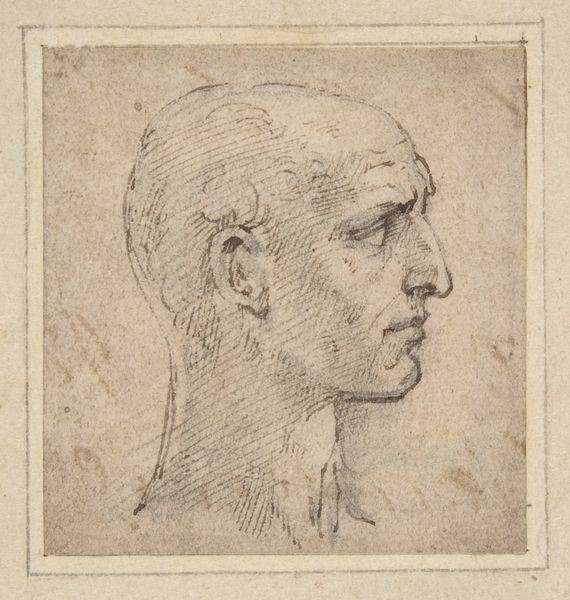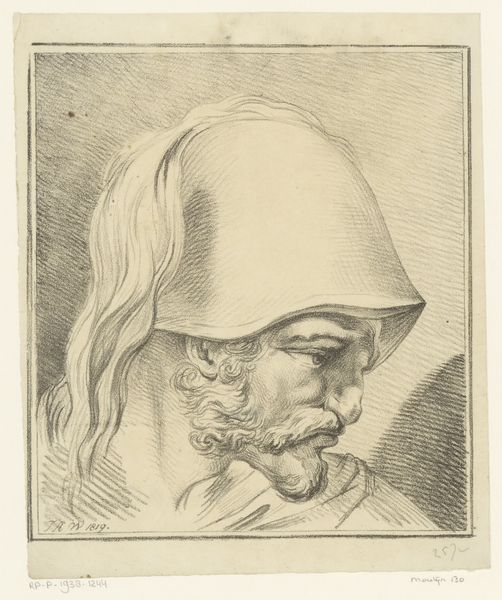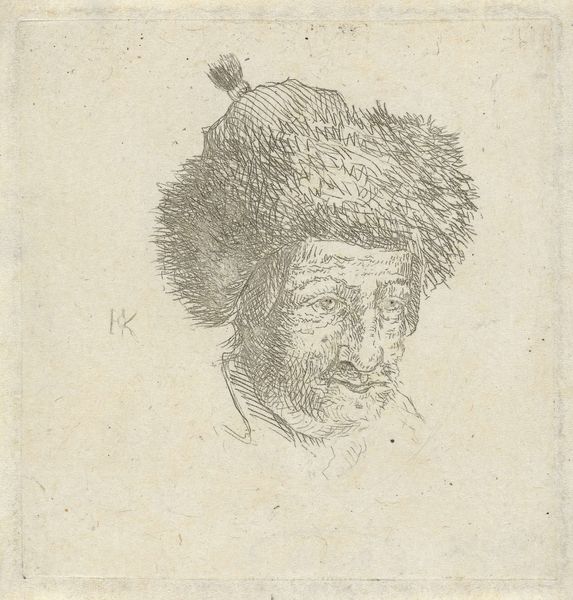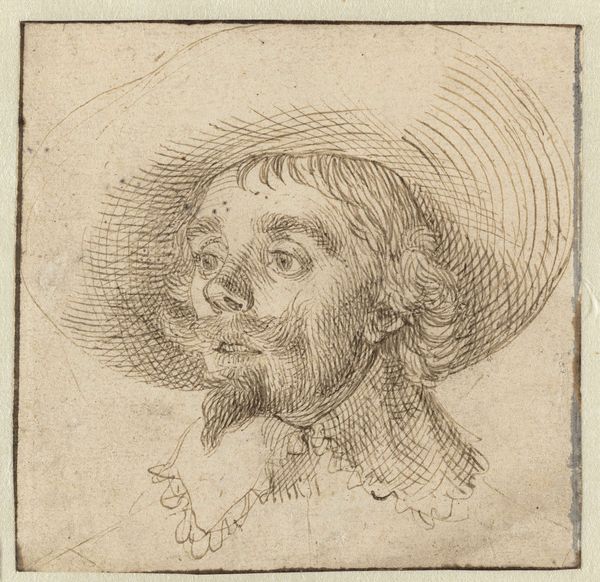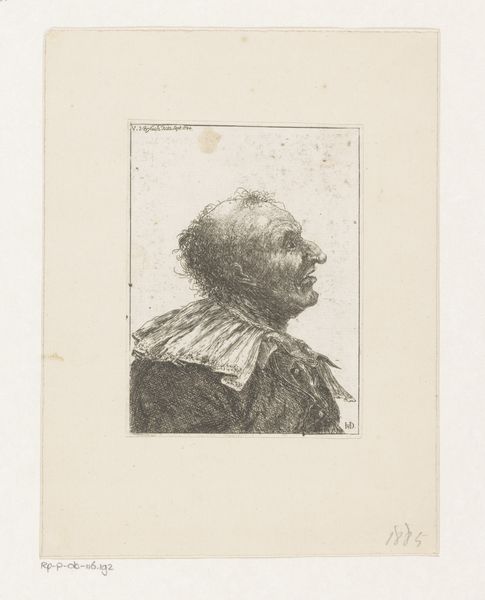
Plate 38: head of a man with a moustache and cap, facing right in profile, from 'Various portraits' (Recueil de diverses pièces servant à l'art de portraiture) 1645 - 1650
0:00
0:00
drawing, print, etching, engraving
#
portrait
#
drawing
#
baroque
# print
#
etching
#
figuration
#
pencil drawing
#
men
#
line
#
portrait drawing
#
engraving
#
profile
Dimensions: Sheet: 2 15/16 x 2 1/2 in. (7.5 x 6.4 cm) Plate: 2 11/16 x 2 7/16 in. (6.9 x 6.2 cm)
Copyright: Public Domain
Editor: We're looking at "Plate 38: head of a man with a moustache and cap" by Stefano della Bella, created around 1645-1650. It’s an etching, so a print, depicting a man's head in profile. The intricacy of the line work is incredible. What are your initial thoughts on this piece? Curator: Immediately, the strategic deployment of hatching commands attention. Consider how the artist utilizes line density and orientation. What visual rhythms emerge from these constructed patterns? The subject’s cap, in particular, showcases the capacity for simple etched lines to imply volume. Note the fineness of detail and the formal tensions at play within its compact frame. Editor: I see what you mean, especially in how the lines curve to define the cap’s shape. Does the direction of the hatching also suggest texture? Curator: Indeed. Examine closely the facial hair against the smoother planes of the face, noticing the shift in linear texture which builds this contrast. Beyond mere representation, Della Bella invites consideration of mark-making as a structural element within the composition itself. It provokes contemplation of how seemingly disparate formal vocabularies - here, portraiture and etching - can be interwoven. Editor: That's fascinating; I hadn't thought about it in terms of pure structure and the relationship between line and form like that. Curator: This print operates as a study in how lines and tone establish pictorial depth and simulate material surfaces. Notice the economic means by which Della Bella defines the form. How does it challenge or uphold established notions of mimesis and artistic invention in the 17th century? Editor: I guess focusing on the etching itself and how it's made can give you a completely new understanding of the piece. Curator: Precisely. Considering an artwork’s constituent elements provides an invaluable key for understanding it and its historical context. Editor: Thank you. I will certainly keep the construction in mind.
Comments
No comments
Be the first to comment and join the conversation on the ultimate creative platform.
